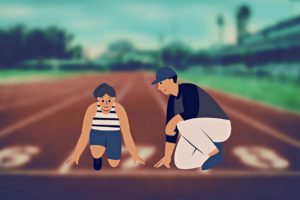Are you a parent who wants to raise a multilingual child? Or maybe you’re a language learner who wants to improve your language skills. Whatever your reason, bilingual children’s books can be a valuable tool in nurturing multilingualism.
These books can help children and adults alike learn and practice a second language in a fun and engaging way. Bilingual children’s books offer a range of benefits. They can help improve language skills by exposing readers to new vocabulary, grammar, and sentence structures.
Additionally, they can help build cultural awareness and empathy by introducing readers to different perspectives and experiences. With so many great bilingual children’s books available, there’s no better time to start using them in your language learning journey.
In this article, we’ll explore the benefits of bilingual children’s books, how they work, and offer some tips for getting the most out of them.
Key Takeaways
- Bilingual children’s books help nurture multilingualism and aid language learning.
- These books improve cognitive development, problem-solving skills, memory retention, and creativity.
- Bilingual children’s books provide an opportunity to introduce new cultures, languages, and perspectives, promoting cultural awareness and empathy.
- They also promote bilingual literacy and cultural representation, while offering a fun and engaging learning experience for parents and children.
Benefits of Bilingual Children’s Books
You’ll be amazed at how bilingual children’s books can not only improve your child’s language skills but also foster a deeper understanding and appreciation for different cultures. Children who read bilingual books have been shown to have improved cognitive development, including better problem-solving skills, memory retention, and creativity.
Reading in two languages also helps children develop a more advanced understanding of language structure and grammar, as well as a broader vocabulary.
Another benefit of bilingual children’s books is increased cultural awareness. Reading stories in different languages allows children to learn about different cultures, traditions, and ways of life. This exposure to diversity can help children develop empathy and understanding for others, as well as a sense of curiosity and appreciation for the world around them.
Bilingual children’s books provide a unique opportunity for parents to introduce their children to new cultures, languages, and perspectives, ultimately helping them become more well-rounded individuals.
How Bilingual Children’s Books Work
When using bilingual children’s books, it’s important to understand how they work in order to fully benefit from them. Bilingual literacy is the goal of using these types of books, which means that children are learning to read and understand two languages simultaneously. The key to bilingual literacy is to find books that are written in both languages equally, rather than just having a translation on the opposite page.
In addition to promoting bilingual literacy, bilingual children’s books also provide cultural representation. By reading stories in both languages, children are exposed to different cultures and ways of life. This not only helps them to appreciate diversity, but also allows them to see themselves represented in the books they read. The following table illustrates some examples of bilingual children’s books that promote bilingual literacy and cultural representation.
| Book Title | Languages | Cultural Representation |
|---|---|---|
| The Very Hungry Caterpillar | English/Spanish | Mexican and American cultures |
| Where the Wild Things Are | English/Spanish | Latin American and American cultures |
| Little Red Riding Hood | English/French | French and English cultures |
| The Cat in the Hat | English/Spanish | Mexican and American cultures |
By using bilingual children’s books, you can not only help your child to develop bilingual literacy, but also introduce them to different cultures. These books offer a unique opportunity for children to learn about the world around them in a fun and engaging way.
Top Bilingual Children’s Books
Discovering new cultures and learning a second language can be an exciting adventure for young readers, and these top bilingual children’s books are sure to captivate their imaginations.
With popular titles like ‘The Cat in the Hat/El Gato Ensombrerado’ and ‘Corduroy/Corduroy’, these books not only offer language practice but also expose children to diverse themes and perspectives.
Bilingual storytelling techniques are used to seamlessly blend two languages together, creating a unique reading experience. The illustrations are often used as a tool to help readers understand the text in both languages, making it easier for them to learn new vocabulary.
These books also offer a great opportunity for parents and children to learn together, as they explore new cultures and languages side by side.
Tips for Reading Bilingual Children’s Books
As you’re reading bilingual children’s books, don’t hesitate to pause and take the time to fully absorb the meaning of each language. Reading strategies can vary depending on your level of fluency in both languages. If you’re a beginner, start by reading the book in your dominant language first, then go back and read it in the second language. If you’re more advanced, try reading both languages at the same time to compare and contrast the vocabulary and grammar.
When selecting titles, consider your child’s interests and age. Look for books that have simple, repetitive phrases that are easy to understand and memorize. This will help your child build a strong foundation in both languages. Additionally, look for books that use culturally relevant content, such as traditional stories, folktales, and songs. This will not only spark your child’s interest but also expose them to different cultures and ways of life. Don’t be afraid to experiment with different titles to find the ones that work best for you and your child.
Using Bilingual Children’s Books in Language Learning
Are you looking for effective ways to incorporate bilingual children’s books in your language learning journey? Whether you’re a teacher or a parent, these books can be a valuable tool for enhancing language skills.
In the classroom, they can be used for group reading and interactive activities, while at home, they can provide a fun and engaging way to practice language with your child.
With benefits like improved vocabulary, comprehension, and cultural awareness, bilingual children’s books are a must-have for any language learner.
Classroom Use
You can easily incorporate bilingual children’s books into your classroom, immersing your students in a world of vibrant colors and diverse cultures. By setting up bilingual book clubs or simply reading aloud from bilingual books during class time, you can expose your students to a range of languages and cultures. This not only promotes language learning but also fosters an appreciation for diversity and multiculturalism.
To make the most of bilingual children’s books in the classroom, consider these tips:
Choose books that incorporate culture: Look for books that not only offer language practice, but also teach about different cultural traditions and customs. This will help your students understand the richness and complexity of different cultures and develop empathy and respect for others.
Encourage active engagement: Don’t just read the book and move on. Instead, encourage your students to actively engage with the text by asking questions, making connections to their own lives, and discussing the themes and messages of the book.
Use the books for language practice: Bilingual books are a great tool for language practice. Encourage your students to read the book in both languages, and provide opportunities for them to practice speaking and writing in the target language.
By using bilingual children’s books in the classroom, you can nurture multilingualism and promote cross-cultural understanding among your students.
At-Home Use
Using bilingual books at home can be a fun and effective way to introduce your child to new languages and cultures. For multilingual families, it can also be a way to maintain and strengthen their native languages while exposing their children to a new language.
Bilingual books provide the opportunity for families to read and discuss stories together in both languages, allowing children to develop their language skills in a natural and comfortable way.
In addition to language development, bilingual books also provide cultural representation. Children can learn about different cultures and traditions through the stories and illustrations in these books. This can help foster a sense of empathy and understanding towards people from different backgrounds.
By incorporating bilingual books into your at-home reading routine, you can not only promote language development but also encourage a love for learning about different cultures.
Benefits for Language Learners
Learning a second language can open up a world of opportunities for you, and bilingual children’s books can aid in this process by providing a fun and immersive way to practice and improve your language skills. Here are some of the benefits of using bilingual children’s books for language learners:
Enhances language skills: Reading bilingual books can help you improve your vocabulary, grammar, and sentence structure in both languages. It also helps you develop a better understanding of the nuances of each language.
Builds cultural awareness: Bilingual children’s books often include stories and characters from different cultures. This allows you to learn about different traditions, customs, and ways of life, which can expand your worldview and cultural competence.
Promotes a love for reading: When reading bilingual books, you are encouraged to engage with the story, and this can help foster a love for reading. This, in turn, can help you develop a lifelong passion for learning and exploring new ideas.
To incorporate bilingual children’s books into your language learning routine, try reading them aloud, translating unfamiliar words, and discussing the story with a language partner or tutor. With regular practice, you can reap the many benefits of bilingual children’s books and improve your language skills in a fun and engaging way.
Frequently Asked Questions
What are some potential drawbacks or limitations of using bilingual children’s books for language learning?
When it comes to language immersion and bilingual education, using bilingual children’s books can have some potential drawbacks or limitations.
One of these is that children may rely too heavily on the translation provided, rather than actually learning and understanding the meaning of the words themselves.
Additionally, bilingual books may not provide enough exposure to the target language, as children may simply read the text in their stronger language and not engage with the bilingual aspect.
It’s important to use bilingual books as just one tool in a larger language learning strategy, rather than relying on them solely for language acquisition.
How can parents or educators assess the appropriateness of bilingual children’s books for a child’s language development needs?
To assess the appropriateness of bilingual children’s books for a child’s language development needs, you need to consider their language proficiency levels. This means evaluating their current language abilities in both languages and choosing books that align with their level of understanding.
It’s also important to consider the complexity of the language used in the book and whether it’s appropriate for their age. You can start by choosing books with familiar topics and simple language structures, and gradually introduce more challenging books as their language skills improve.
Additionally, it’s important to choose books that are culturally relevant and reflective of the child’s background, as this can help them feel more connected to the content and motivated to learn.
By assessing the appropriateness of bilingual children’s books in this way, you can support a child’s language development and nurture their multilingualism.
Are there any differences in the effectiveness of using bilingual books versus monolingual books with translated versions in a child’s second language learning?
When it comes to second language learning, you may wonder about the effectiveness comparison between bilingual books and monolingual books with translated versions.
Studies suggest that bilingual books have advantages in promoting language development and cultural understanding. Bilingual books provide exposure to both languages and help children make connections between them. Bilingual books also provide opportunities for code-switching, a skill that is useful for multilingual communication.
In contrast, monolingual books with translated versions may not be as effective in promoting language proficiency and cultural awareness.
Overall, bilingual books seem to be more effective than monolingual books with translated versions in promoting second language learning.
What are some ways that bilingual children’s books can be integrated into classroom or home language learning activities beyond just reading them?
To integrate activities and language acquisition strategies beyond just reading bilingual children’s books, there are several options available.
For example, you could encourage students to create their own bilingual stories or comic strips using vocabulary and grammar rules they’ve learned in class.
Another idea is to play language games that incorporate vocabulary from the books, such as memory or bingo.
Additionally, you could use the books as a resource for writing prompts or to spark discussions about cultural differences and similarities.
By using bilingual children’s books as a jumping-off point for other language learning activities, you can help students develop a deeper understanding and appreciation for multiple languages and cultures.
How can bilingual children’s books be used to support and promote cultural understanding and respect among children from different linguistic backgrounds?
To support and promote cultural understanding and respect among children from different linguistic backgrounds, you can use bilingual children’s books as a tool for cultural exchange and to celebrate linguistic diversity. These books not only provide children with the opportunity to learn a new language, but also to learn about different cultures and customs.
By incorporating bilingual books into your language learning activities, children can gain a deeper understanding of other cultures and develop empathy and respect for those who speak different languages. Additionally, bilingual books can help children feel represented and valued, especially if their native language is not the dominant language in their environment.
Encouraging the use of bilingual children’s books can create a more inclusive and welcoming environment for all children.
Conclusion
You’ve learned about the benefits of bilingual children’s books and how they can help nurture multilingualism. These books are a great tool for parents, teachers, and language learners to introduce new languages and cultures to children.
By providing a fun and engaging way to learn a new language, bilingual books can help children develop language skills, increase cultural awareness, and build a love for reading.
To make the most out of bilingual children’s books, it’s important to choose books that are appropriate for the child’s age and language level. Use the tips outlined in this article to enhance the reading experience and encourage language learning.
Whether you’re a parent, teacher, or language learner, incorporating bilingual children’s books into your routine is a great way to support the development of multilingualism in children.

















